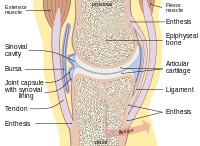
Photo from wikipedia
Abstract Climate change has turned into one of the most important concerns for scientist in the last years due to the huge increase of CO2 concentration in the atmosphere in… Click to show full abstract
Abstract Climate change has turned into one of the most important concerns for scientist in the last years due to the huge increase of CO2 concentration in the atmosphere in the last century. Electrocatalytic reduction seems to be a very promising technology to help to reduce industrial CO2 emissions. The development of catalysts capable of activating the CO2 molecule is the main challenge of this technology. In this work a copper supported on carbon nanotubes (Cu/CNT) catalyst has been synthesized using supercritical fluid deposition (SFD) and assembled into a polymer electrolyte membrane (PEM) type cell to carry out the electrochemical reduction of CO2. The influence of current density, temperature and CO2 flowrate has been analysed and results have been compared with those previously obtained with Pt/CNT and Pb/CNT catalysts synthesized by SFD. The CO2 reduction rate and the products distribution attained with the three catalysts have been analysed. CO has been the main reaction product attained with the Cu/CNT catalyst developed in this work, followed by small amounts of formic acid and methane. This can be considered the main difference observed in relation with Pt or Pb based catalysts that promote the production of formic acid as main reaction product. CO2 conversion rate increases with temperature and CO2 flowrate and is much higher than that attained when using Pt or Pb based catalysts in the same experimental conditions (up to 27 times higher depending on the experimental conditions).
Journal Title: Electrochimica Acta
Year Published: 2020
Link to full text (if available)
Share on Social Media: Sign Up to like & get
recommendations!